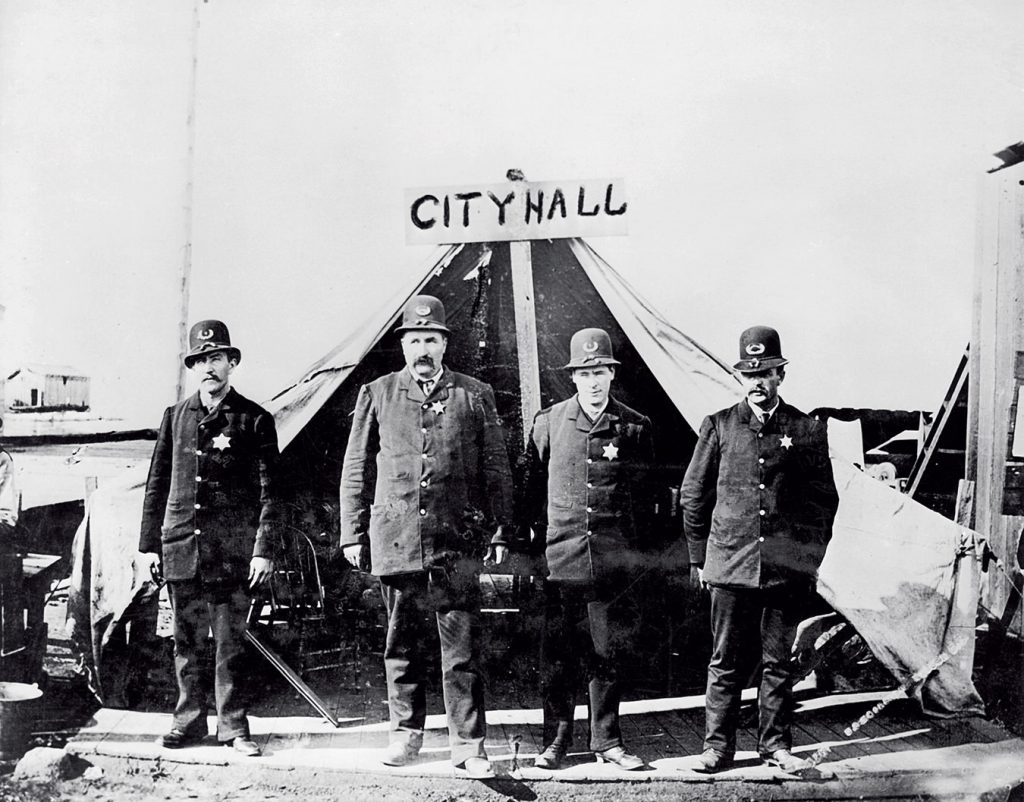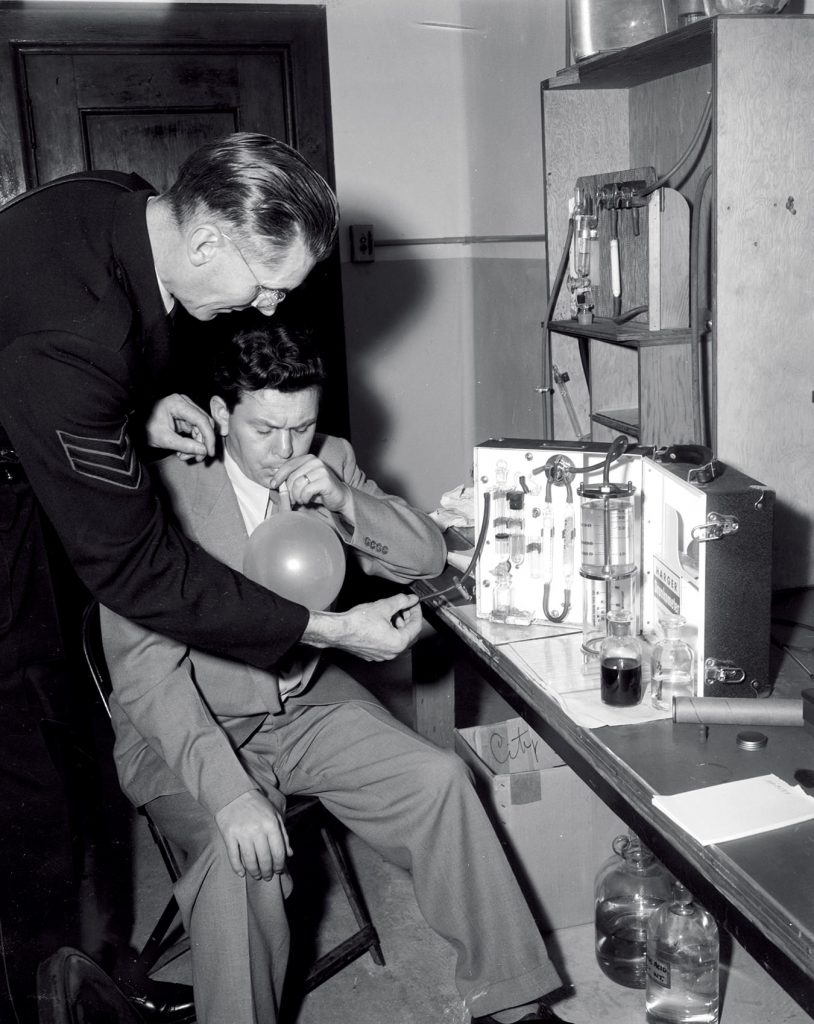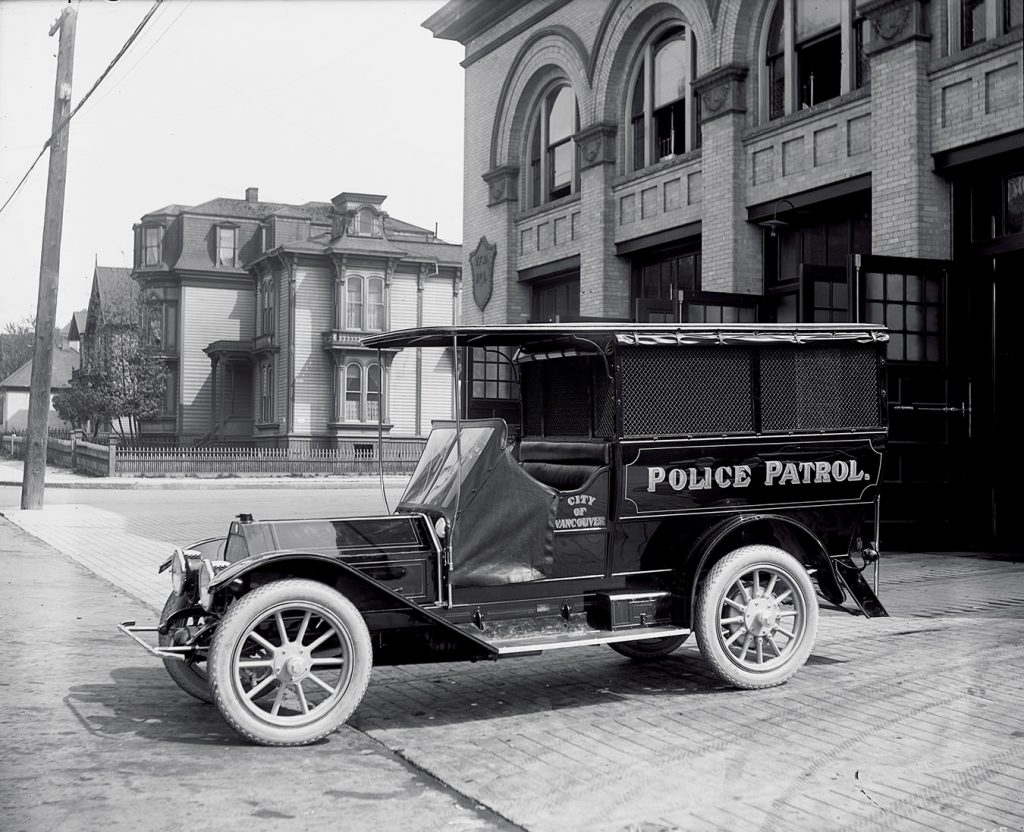Do not be alarmed upon entering the Vancouver Police Museum. There is someone sitting before a 1950s dispatch radio and an assignment board where patrols and other resources are tracked using coloured magnets. But he is just a mannequin, and this is the very first exhibit in the museum.
Upstairs, it is a pretty friendly place. The museum offers a number of educational programs; each year, more than 10,000 students of all ages participate in interactive tours and workshops. A lot of fun can be had with the dress-up box of old uniforms, including a body armour vest, if you can manage to hoist it above your knees. There’s a jail cell, too; complete with bright orange jumpsuit and placard with booking information, it’s a popular photo opportunity. The museum also offers a number of walking tours to the general public. “Sins of the City: Vice, Dice, and Opium Pipes” leads you into Chinatown for an enthralling history lesson.
The Vancouver Police Historical Society was established in 1983, and it opened the museum in 1986. Housed in a municipally designated heritage building dating from 1932, it occupies what was once Coroner’s Court; the city’s old morgue and autopsy suite remain mostly intact as exhibits. There is a banner there that reads “Taceant colloquia. Effugiat risus. Hic locus est ubi mors gaudet succurrere vitae. Let idle talk be silenced. Let laughter be banished. This is the place where death rejoices to teach those who live.” It is a standard inscription in autopsy facilities in the Western world and a grim reminder that such proceedings should not be taken lightly. The forensics facility, the City Analyst’s Laboratory, was located on the main floor and basement from 1932 until its last use in 1995.
Today, the collection includes more than 20,000 items, a little over half of which are on display. Known gambling techniques and devices are revealed, counterfeit notes are exposed, and prescription drugs and illegal substances are demystified. A computer terminal with a facial recognition program puts you to the test. The prohibited and confiscated weapons on display receive quite a bit of goggling. There’s the expected (brass knuckles, switchblades, a dagger, knives), the unexpected (a crossbow, blow darts, a spring-loaded tokushu keibo baton), the new, the old, the homemade.
An amusing contraption on display, the Harger Drunkometer, recorded the first impaired driving conviction in Canada in 1953. Invented in 1938 by one Rolla N. Harger, a professor at Indiana University, it was the first practical roadside testing device intended for use by police. The suspect would exhale into a balloon, and the collected sample was released into an acidified potassium permanganate solution. All parties would wait with bated breath to see if the solution changed colour.
The Vancouver Police Department’s Motorcycle Drill Team was the first in Canada. Duties included traffic law enforcement, security escorts for dignitaries, live performances, public relations, and, yes, trick shows. Riding skills, collision avoidance, tight radius turns, and more are included in the set of manoeuvres. And complex human stacks—photographic proof exists. Commanding a fleet of Harley Davidson Road King motorcycles, the Drill Team has been rated as Canada’s foremost Escort Unit, working in conjunction with the RCMP Protective Services.
In the city’s early history, progress was fuelled by liquor. Hastings Mill was built at the foot of Dunlevy Avenue in 1867, and men would walk from work past the “dry” zone designated by the mill to the saloon a mile away. (This well-worn trail later became Alexander Street.) Work on the Canadian Pacific Railway began in 1885, and as industry picked up, so did the population. By 1886, there were about a thousand people living in the city (mostly men). Vancouver received city status, and in May, the city council decided it was time for police. Perhaps not a moment too soon, for about a month later, the Great Fire razed the city. Only several buildings and, in a moment of great collective insight, barrels of whisky (rolled into Burrard Inlet) were saved. The earliest photograph of the Vancouver Police Department shows the four-man force standing outside city hall’s temporary location after the devastating fire—a tent at the foot of Carrall Street. The outfit has come a long way; almost 130 years later, the VPD now includes nearly 400 civilian employees and more than 1,300 sworn officers.
For curious folk and those from out of town, the Vancouver Police Museum is a captivating look at crimes both blue- and white-collar, and a window into Vancouver’s fascinating past. It is, as promised in its slogan, “an arresting experience.”
Photo 01: H.T. Devine, Vancouver Public Library 1090.
Photo 02: Stuart Thomson, Vancouver Public Library 6622.
Photo 03: Province Newspaper, Vancouver Public Library 42992.











